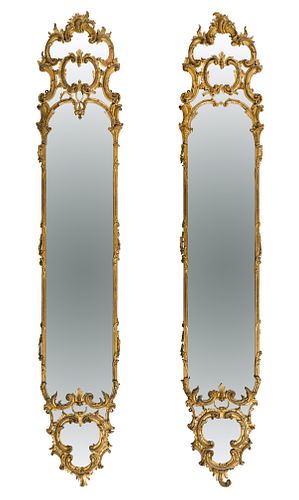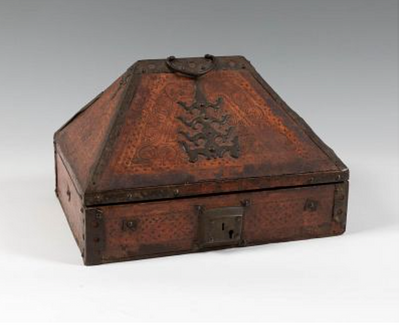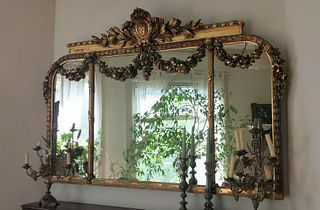Pair of mirrors Louis XV. France, mid-18th century. Carved and gilded wood.
Lot 93
About Seller
Setdart Auction House
Carrer Aragó 346
Barcelona
Spain
Setdart Subastas was born in 2004 and is currently the first online art auction in Spain with solidity, prestige and reliability guaranteed by our more than 60,000 users. Setdart has a young, dynamic and enterprising team ready to successfully manage the purchase and sale of art works through custom...Read more
Estimate:
$7,500 - $8,000
Absentee vs Live bid
Two ways to bid:
- Leave a max absentee bid and the platform will bid on your behalf up to your maximum bid during the live auction.
- Bid live during the auction and your bids will be submitted real-time to the auctioneer.
Bid Increments
| Price | Bid Increment |
|---|---|
| $0 | $10 |
| $200 | $25 |
| $500 | $50 |
| $1,000 | $100 |
| $3,000 | $200 |
| $5,000 | $500 |
| $10,000 | $1,000 |
| $20,000 | $2,000 |
| $50,000 | $5,000 |
About Auction
By Setdart Auction House
Jun 2, 2021
Set Reminder
2021-06-02 07:00:00
2021-06-02 07:00:00
America/New_York
Bidsquare
Bidsquare : DECORATIVE ARTS XVI-XIX
https://www.bidsquare.com/auctions/setdart-auction-house/decorative-arts-xvi-xix-7000
Setdart Auction House sofia@setdart.com
Setdart Auction House sofia@setdart.com
- Lot Description
Pair of mirrors Louis XV. France, mid-18th century. Carved and gilded wood. Measurements: 290 x 50 cm. Pair of mirrors framed within the late French baroque, dating from the mid-eighteenth century and made of carved and gilded wood. The careful vegetal proliferation that surrounds these mirrors, both identical, defines a typically rococo frame, respecting the perfect symmetry of the whole. The high crest, composed of a center of fleshy leaves, is bordered with brackets and acanthus, and the structure is finished with a flower preceded by a bow folded in sinuous ribbons. At the beginning of the frame, in contrast, we see a cartouche surrounded by foliated motifs that balances the structure. The sinewy stems climb up the flanks, curling into graceful forms. One of the periods of greatest splendor of the furniture is that of Louis XV, which occupies the central decades of the eighteenth century and has become a symbol of the Ancien Régime, of court life in European palaces, of an entire era that ended with the rebellion of the people against Enlightened Despotism. Louis XIV died in 1715 and after a few years of regency Louis XV ascended to the throne, who while maintaining the lavish palace of Versailles, preferred life in Paris, so much of the aristocracy and the French bourgeoisie of the time built luxurious villas and mansions in the French capital. Of course, it was in France where this style was born and where the most exquisite and high quality furniture was produced. Since the dawn of time, the mirror is a decorative element used by both royalty and its people. The Louis XVI style was inspired by classical Antiquity and was one of the most representative of Neoclassicism. The rich and loaded motifs are generally taken from plants and their foliage, vines, laurel leaves, flowers and fruits. The fame of this type of objects of great value later remained one of the most frequent sources of inspiration for other objects made later, still found today.
- Shipping Info
-
In-house shipping available. Please inquire at admin@setdart.com.
-
- Buyer's Premium



 EUR
EUR CAD
CAD AUD
AUD GBP
GBP MXN
MXN HKD
HKD CNY
CNY MYR
MYR SEK
SEK SGD
SGD CHF
CHF THB
THB

















